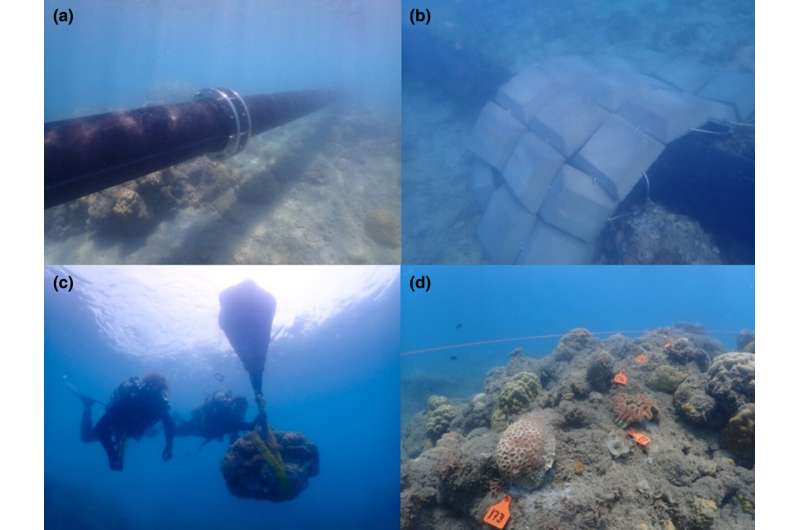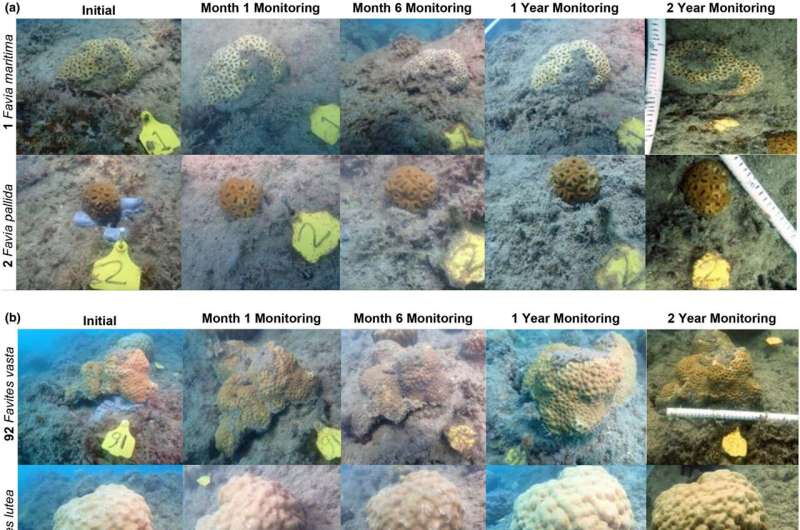This article has been reviewed according to Science X's editorial process and policies. Editors have highlighted the following attributes while ensuring the content's credibility:
fact-checked
trusted source
proofread
Reef management techniques have the potential to save coral

Scientists say the relocation of coral away from the path of a new wastewater pipe has been a success and shows how coral can be moved to reduce the impact of developments and natural disasters.
Adam Smith, Adjunct Associate Professor at James Cook University and CEO of environmental advisory company Reef Ecologic, led the study, which has been published in Ecological Management & Restoration.
"Coral reef management techniques such as relocation and transplantation are increasingly used as coastal developments and the global decline of coral reefs has increased over the last 30 years," said Dr. Smith.
He said a 170-meter pipeline was constructed in 2020 to discharge wastewater from the desalination plant at Hayman Island resort, located off the Queensland coast.
"There was a healthy coral community in the route of the pipeline so we worked to detach the corals using a hammer and chisel or crowbar, then placed them into crates and moved them 20 to 100 meters away.
"A total of 204 corals were relocated and placed on bare rocks, held in place by a concrete mixture," said Dr. Smith.
'"Scientists monitored the coral immediately after they were moved and at one, six, 12 and 24 months.
"Overall survival of translocated coral was 94.6% after 12 months and 77.5% after two years, with smaller corals doing better."

Dr. Smith said minimizing damage from marine construction activities involving dredging, marinas, moorings, or pipelines in and around coral reefs was a priority for sustainable development.
"Using the techniques implemented at Hayman Island gave higher survival rates for the relocated coral than the global average of 64%.
"Apart from saving corals from certain destruction due to development, it means repositioning coral colonies can also effectively aid in reef recovery in the aftermath of acute disturbances such as cyclones," said Dr. Smith.
More information: Adam K. Smith et al, Effectiveness of coral (Bilbunna) relocation as a mitigation strategy for pipeline construction at Hayman Island, Great Barrier Reef, Ecological Management & Restoration (2024). DOI: 10.1111/emr.12590
Provided by James Cook University





















